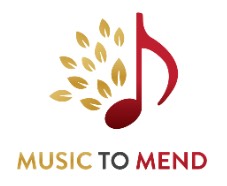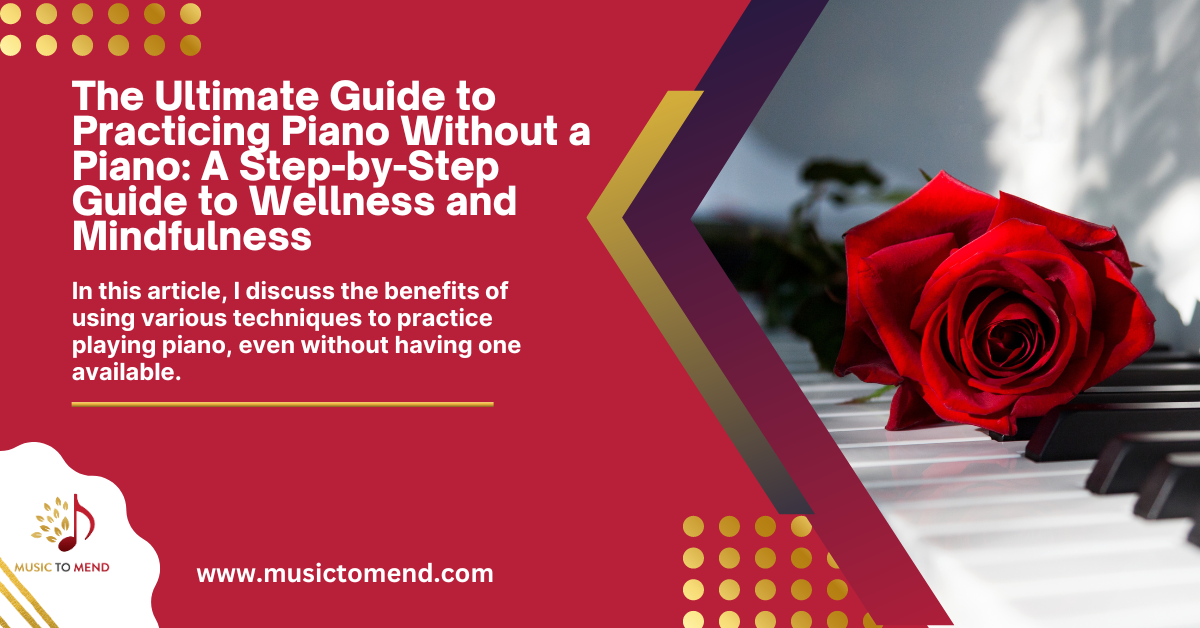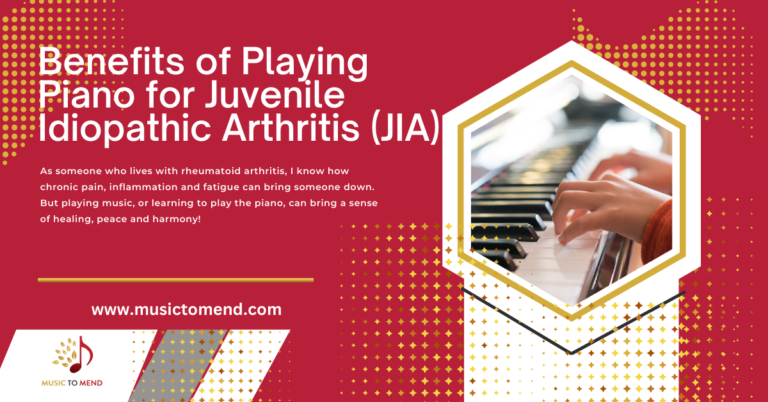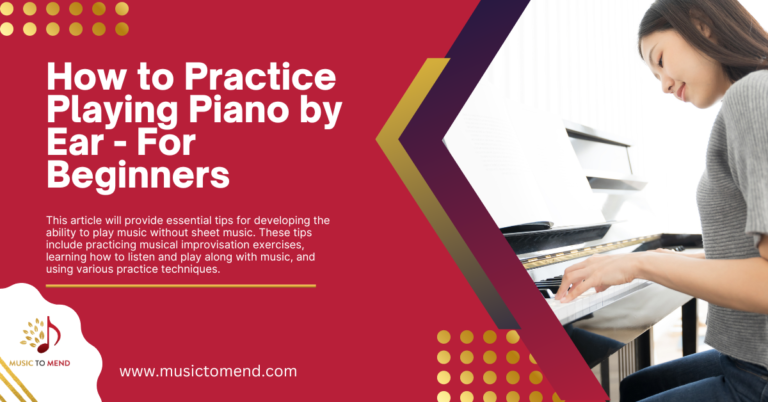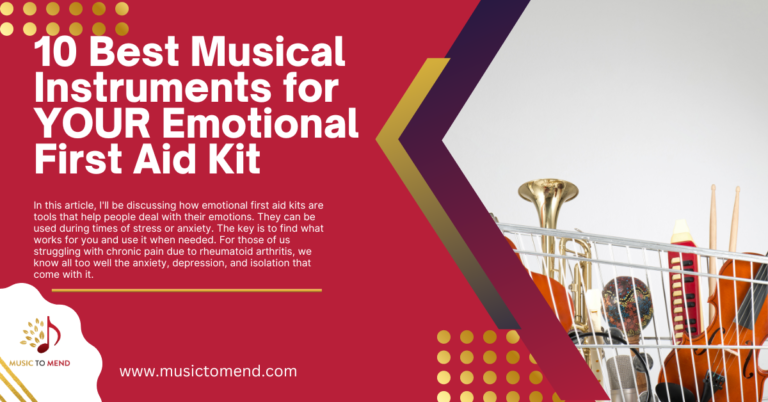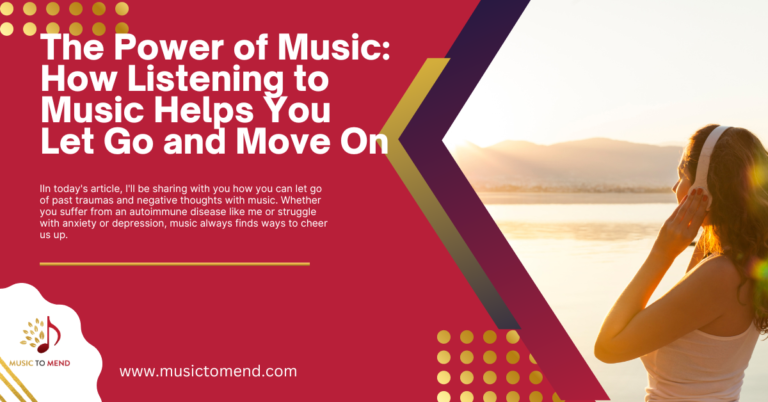The Ultimate Guide to Practicing Piano Without a Piano: A Step-by-Step Guide to Wellness and Mindfulness
In today’s article, I’ll discuss the benefits of using various techniques to practice playing the piano, even without having one available. This idea and these actions take me back many years when our family didn’t actually have a piano in the house. I would sing or hum out a melody in my mind and then make piano-playing actions on a desk or table. This method can be used by anyone who wants to learn to play the piano and doesn’t yet have an actual piano to play. Tapping out a melody on a table by gently tapping with your palms and fingers is also an excellent form of therapeutic exercise for those of us who suffer from Rheumatoid Arthritis, Tendonitis, thumb pain, or any other form of hand joint pain.
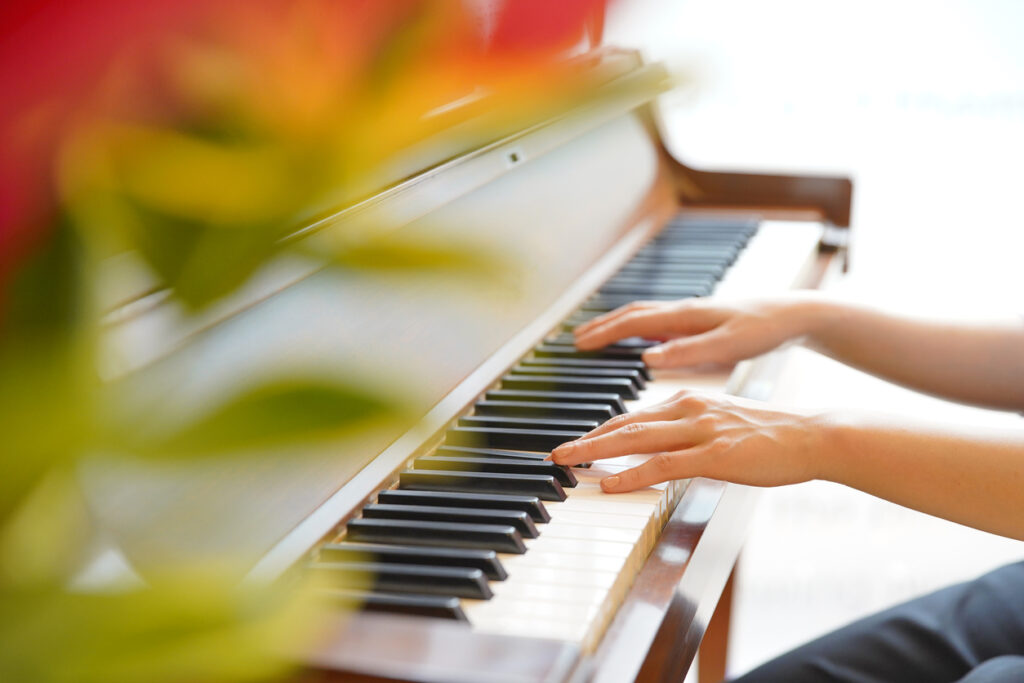
What is the Benefit of Practicing Piano Without a Piano?
Practicing piano without a piano has been gaining popularity in recent years as an alternative to traditional piano practice. This method of practicing allows people to enjoy the benefits of playing the piano without having to invest in a physical instrument. It can be used to improve mental health, wellness, and mindfulness by helping people relax, reduce stress, and increase concentration. Additionally, it is an accessible form of practice that can be done anywhere and anytime without requiring any special equipment or space. By taking advantage of this method of practicing, individuals can reap the many benefits associated with playing the piano without having to commit to purchasing a physical instrument.
What Are the Advantages of Practicing Piano without a Physical Instrument?
Practicing piano without a physical instrument can be a great way to improve cognitive skills and stay motivated. It can also help those who have limited access to an instrument, such as those living in remote areas or with limited resources.
The advantages of practicing piano without a physical instrument include the ability to focus on specific skills, the ability to practice anywhere, and the potential for increased motivation. Practicing without an instrument allows one to focus on specific techniques such as finger placement, timing, and rhythm. Additionally, it is easier to set daily practice goals when there is no access to an instrument since one can practice anytime and anywhere with just their imagination. Lastly, practicing without an instrument may help increase motivation since there are no distractions or limitations due to the lack of a physical instrument.
5 Creative Ways to Practice Piano Without an Instrument and Improve Your Musical Skills
1. Making Use of Digital Apps to Simulate Playing the Piano
Playing the piano is a skill that requires a lot of practice and dedication. However, with the help of digital apps, it is now possible to simulate playing the piano without having to purchase an actual instrument. Digital piano apps provide users with an interactive virtual keyboard that they can use to play music and learn the basics of piano playing. They also offer access to online musical keyboards, providing users with an opportunity to explore different sounds and compositions. As such, these digital apps have become popular among aspiring pianists who are looking for a more convenient way to learn how to play the piano.
2. Learn New Chords and Progressions Through Sheet Music
Learning new chords and progressions through sheet music can be a great way to improve your musical skills. With online sheet music, you can access all kinds of songs and compositions in a variety of genres. You can also find tutorials that will help you learn how to read music notation so that you can start playing and understanding the music faster. By studying sheet music, you can learn how different chords are used in different songs, as well as how to create your own chord progressions. With practice, you will become more familiar with the structure of songs and be able to create your own unique pieces of music.
3. Utilizing Audio Recordings to Learn New Songs & Techniques
Learning a new song or technique can be difficult and time-consuming, especially when you don’t have access to an instrument. However, with the help of audio recordings, it is now possible to learn new songs without the need for a physical instrument. Audio recordings can be used to help you understand the structure of a song and even pick up techniques that you may not have been able to learn by simply listening to it. By listening to audio recordings and analyzing them, you will be able to pick up on nuances in the music that would otherwise have gone unnoticed. This will help you improve your playing skills and become better at understanding music theory.
4. Practicing Technique Through Exercises & Intervals
Practicing technique is essential for learning music without an instrument. Exercises and intervals are important components of effective practice sessions. Exercises help to develop muscle memory, while intervals allow musicians to focus on specific elements of the music. Through these exercises and intervals, musicians can hone their skills and improve their playing ability. By regularly practicing technique through exercises and intervals, musicians can become more proficient in playing any type of music without an instrument.
5. Investing in a MIDI Keyboard Controller and Recording Software
Investing in a MIDI Keyboard Controller and Recording Software is a great way to create professional-sounding music. With the right setup, you can create unlimited possibilities for your music. A MIDI keyboard controller is an electronic device that allows you to control sound parameters such as volume, pitch, and modulation of digital instruments. It also allows you to record and edit your music with ease. Recording software is also essential if you want to record your music without having to purchase expensive studio equipment. With recording software, you can easily edit and mix your tracks in the comfort of your own home. Investing in a MIDI Keyboard Controller and Recording Software will give you the tools necessary to produce quality recordings for years to come.
Conclusion
Practicing the piano without an instrument can seem like an impossibility. However, there are several creative ways to practice your piano skills at home without a keyboard. From visualizing music to playing along with apps and online tools, these five methods provide an opportunity to hone your skills and keep your technique sharp even when you don’t have access to a real instrument. With these creative approaches, you can practice piano without an instrument and become a better musician.
I hope you found this article helpful and informative.
Until next time, happy music-making, and stay well!
Bea
